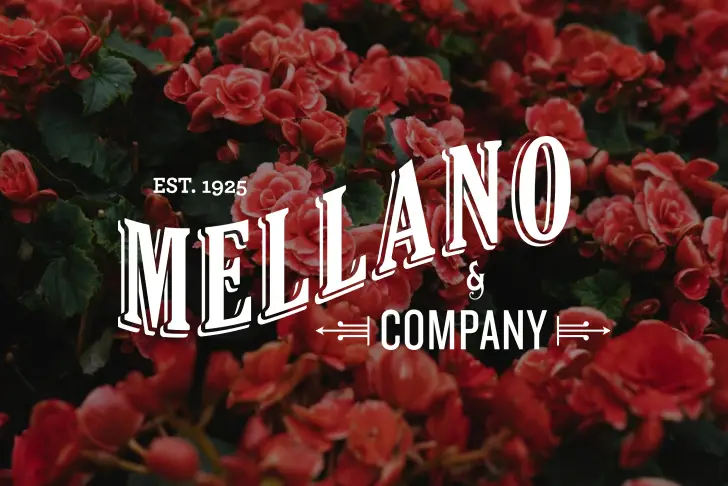Highlights:
- Improved productivity by 30%
- Floor space reduced by 30%
The Business Challenges:
Mellano & Company is a third-generation family-owned and -operated full-line floral business, serving Southern California and Southern Nevada. They operate a growing facility in Oceanside, California, as well as wholesale and importing operations in the LA Flower Market, the Floral Trade Center in Carlsbad, and Las Vegas.
Mellano’s market strengths involve service, dependability, quality, and convenience. These strengths present a financial challenge; Mellano competes with cut-flower suppliers in low-cost world areas such as South America, so productivity, efficiency, and cost reduction are critical to increasing profitability.
The FlowVision Solution:
Like many green-industry businesses, about half of Mellano’s total labor hours involve directly taking care of a customer’s order: harvest, grade, pack, and ship. The rest of the labor relates to soil preparation, growing, pest control, and so on. Mellano and FlowVision agreed that harvest-through-ship would be the best place to start. The first area Mellano and FlowVision addressed with Lean Flow was bulb processing. After the cut-flower harvest, Mellano grades, sorts, packages, and ships millions of ranunculus bulbs, over the course of just a few weeks, using a mix of labor and equipment. Bulb processing became much more productive, and fit into a much smaller space – freeing up valuable square footage. Specifically, Mellano processed 30% more bulbs than the prior year, with the same amount of labor hours, in a 30% smaller footprint.
Next for Mellano’s Lean Flow was cut-flower picking and grading. It’s true; Lean Flow involves data and analysis. For this, Mellano was well-prepared, with an innovative labor and product tracking system. The existing data provided a valuable touchstone for validating Lean Flow work definition, and an objective baseline for the process improvements implemented by Mellano and FlowVision. Especially for the work crews and chiefs, these baselines are important – sometimes, Lean Flow improvements look and feel like they are slower than “the old way,” but the numbers don’t lie. The improvements feel slower, but they are actually just easier.
Lean Flow also requires creativity, experience, and intuition from the product and process experts. In this regard, Mellano and FlowVision developed entirely new techniques for picking and grading – once again improving productivity and freeing up space. How much productivity? About 10 to 15%, with work crews that were already skilled, experienced, knowledgeable, and motivated.
Unreliable inventory accuracy, poorly-utilized cooler space, and many unnecessary “touches,” as well as inconsistent receiving and order-picking procedures, are common in the cut-flower industry. Mellano recognized these issues and addressed them with Lean Flow. The profitability impact of bringing consistency, quality, and accuracy to these procedures goes far beyond just the productivity of the receiving, inventory, and order-picking crews. When inventory is correct, the salespeople no longer make trips to the cooler, to verify what’s in stock. When receiving is correct, accounts payable have many fewer exceptions building up in a “pending” file. When order picking is correct, the customer is happy – and so are the folks in sales and accounts receivable.
Mellano also used FlowVision’s patented Statistical Kanban techniques to establish proper target inventory positions for any product in any season. These targets have become a cornerstone of Mellano’s weekly Sales and Operations Planning meetings, fact-based decision-making sessions in which they determine what to harvest, what to buy, how much to sell at the list, how much to sell at a discount, and so on.
Mike Mellano explains, “We have coordinated Lean Flow production systems in the field with sales needs. For example, we have established minimum order quantities with Sales, so that we are not running a crew to a field to pick a small amount – a common practice done earlier. Sales have come to recognize, I believe, that planning on their part improves the efficiency of the Production department. And Field Production has come to recognize the importance of accurate estimations of available product to improve the sales processes in the weeks or months ahead.”
Results:
Across all sites – both growing and wholesale – Mellano and Company experienced a 7% field/warehouse labor-productivity improvement. Sites that were previously only marginally profitable are now contributing to Mellano’s overall margins. Managers, supervisors, and crew chiefs all use Lean Flow tools – process flow charts, standard operation worksheets, etc. – both to run and make improvements in their areas.
For Mellano & Company, Lean Flow is a way of life – a foundational business strategy, not just a tactical project. Notice Mike Mellano’s comments: “We have applied Lean Flow to all areas of production: the pick, irrigation, pesticide application, planting, erosion control, field preparation, basically all aspects of field production. We’ve seen significant improvements in efficiency in every area that we have tried. First, we went after the jobs with the greatest amount of hours worked; for example, what we call ‘pick’ of our flower and foliage products. We then went after smaller jobs, and it is here that we have seen some of the greatest gains in efficiency. We have worked with management at all levels, and have attained a high level of enthusiasm, especially with the crew chiefs who work most hands-on with production. All departments throughout the company, Sales and Marketing, Distribution, Production, Administration, Mechanics, and Maintenance, have coordinated their efforts to make Lean Flow work throughout the company.”



